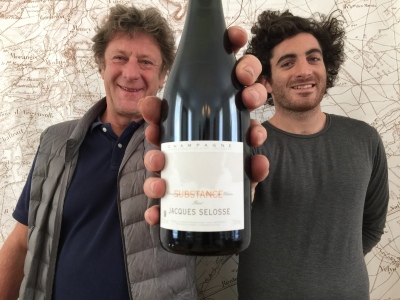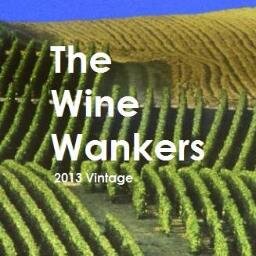At this time of year, Champagne is your best friend! It helps you survive the office Christmas party, the tension fuelled family get-togethers and finally the chiming in of the New Year. Choosing the wrong Champagne, or indeed ‘sparkling wine’, could be a recipe for disaster – thankfully the Wine Wankers are here to set you straight!

- Champagne is from the region in France, north east of Paris. Everything else is ‘sparkling wine’. Unless you’re referring to Cava (a sparking wine region in Spain) or Proseco (region in Italy).
- Always buy sparkling wine from cooler climates. The flavours will be more refined.
- ‘Methode Traditionelle’ or ‘fermented in this bottle’ are label clues for quality – this means the wine is made in the French Champagne style. These wines have been matured on the wine’s dead yeast cells (called yeast lees), in the same bottle it’s sold in. This imparts a lovely toasty/creamy character to the wine.
- Look for the term, ‘matured on yeast lees for xx months’. Noticeable biscuit characters will be more pronounced after 18 month’s maturation. Plus, the bubbles will be tinier and longer lasting!
- Vintage wines are said to be better than non-vintage (NV) wines. These wines (label clue: there is a year printed on the front) are only produced in the very best years. NV wines are a blend of several ‘average to good’ years; these produce a balanced ‘house’ style.
- Chardonnay dominant wines (Blanc de Blanc) are fresh and bright with citrus elements, Pinot Noir dominated wines (Blanc de Noir) are fuller in flavour, with characters of berry fruits. These are great when paired with food.
- Non vintage Champagnes generally have a lot more Pinot Meunier grapes in the mix, rather than the more premium Chardonnay and Pinot Noir. Pinot Meunier is considered a filler grape variety. Pinot Meunier isn’t planted widely outside of Champagne (the region in France).
Chilling
I recommend chilling non-vintage wines to 5°C, while vintage or prestige wines can be served slightly warmer at around 8°C. The reason for this; the base wine is expected to be a lot more flavourful and complex, the warmer temperature will heighten these aromas and flavours.
Opening
When opening a bottle of sparkling wine the object is not to aim the bottle at your least favourite friend in the room and yell, “RUN!” The secret to opening a bottle of sparkling wine is to actually try and stop the cork from coming out! Only then will a gentle sigh be heard instead of a litigious pop. Also, when removing the foil from around the muselet (wire-cage), be sure to leave the foil that sits around the shoulder of the body. If you’re drinking expensive fizz, this is where the wine’s name will be and of course you’ll want to show that off!
Glasses
If you want to get the most from your sparkling wine, serve it in a long stemmed, ‘tulip’ shaped flute rather than a conventional wineglass. The flute’s long and narrow shape allow the bubbles to form and rise to the surface. This shape also helps to preserve the bubbles for longer. Vintage Champagne is a different kettle of fish however, it can be served in a red wine or oaked Chardonnay glass, as it pronounces the bold flavours better.
And always hold the glass by the stem, otherwise you will risk warming up the wine with the heat from your fingers.
Pouring
To pour sparkling wine correctly, hold the base of the bottle in one hand and ‘charge’ everybody’s glass by first pouring a small amount of wine into each. Now wait for this to settle before doing the ‘rounds’ again, filling everybody’s glass to about two-thirds to three-quarters full.
Before you serve your friends you may wish to check the wine is not corked. Sparkling wines are also susceptible to this plight. A ‘bad’ cork can contaminate the wine with a type of mould that makes the wine smell like wet cardboard (in the most severe cases). A slightly corked wine will merely lessen the wine’s fruit aromas. Either way, if you find the sparkling wine is contaminated you should take it back and get an exchange. There is a five per cent chance of it occurring every time.
Visiting Champagne – where not to go
In September this year I visited Champagne for the first time in 23 years – a long time between drinks! I could’ve visited Moet et Chandon, Veuve Clicquot or Mumm, but you can drink these guys EVERYWHERE! When in Champagne, you need to harness your sense of adventure. Check out these hidden gems of Champagne.
Champagne Jacques Selosse – so rare, so delicious. One of the first winemakers in Champagne to adopt the winemaking techniques of White Burgundy (ie – barrel matured and fermented base wines). This is now my ultimate, go-to Champagne.

Champagne Bérêche et Fils – the current darling of the sommelier set, this grower Champenoise uses a solera system to produce it Champagne. This is where the base wine is made from perpetual blending. What the hell does that mean!? Each year, a portion of the current season’s base wine is added to a system of reserve wines that date back to 1985. Wine from this ‘solera system’ is drawn down and added to the lion-share of the current season’s base wine. This results in a Champagne of incredible depth and complexity, while still retaining the freshness of youth.

Champagne Mailly Grand Cru – Only 17 of Champagne’s 319 villages currently enjoy Grand Cru status. Mailly Grand Cru is the only Champagne House to source all of its wines from Grand Cru vineyards. What’s more, the Champagne house is a co-operative, meaning the growers of the village own the Champagne house and share in all the profits.
Champagne Tarlant – These guys respect tradition, but hate conservatism. While they make fantastic traditional Champagne, they are also championing the three rare grapes permitted to be grown in Champagne, Petit Meslier, Arbane and Pinot Blanc. Watch and learn.
Champagne Taittinger – technically yes, this is one of the larger Champagne houses, but it’s also home to one of my favourite prestige bottles of fizz. The Comtes de Champagne Blanc de Blanc.

Champagne Alfred Gratien – by far the best value non-vintage Champagne I tried while in Champagne. Proudly ‘handcrafted’, this means they have the ability to oversee the production and the grapes being sourced. Many argue the largest Champagne houses cannot affor
d to be picky when sourcing grapes, and this results if a less than fine wine. The first fermentation of Alfred Gratien takes place entirely in small 228 litre oak casks, which imparts a vinous, flavoursome, balanced style. Alfred Gratien is one of the last remaining wine-makers to maintain this tradition.




Interesting Post. Love Champagne. I lean towards Piper Hiedsek, but may have to try some you mentioned. Thank you.
LikeLike
Oh – yes – you need to explore more than Piper!! You def should try Alfred Gratien – similar in style – but a step up! And it’s not that much more expensive. Where do you live?
LikeLike
Just been to Champagne and tasted 9 different growers. Here’s my top recommendation: https://thomaspeck.wordpress.com
LikeLiked by 1 person
Great article – looks a lot colder than when i was there!!
LikeLike
I have a sentimental fondness for a Laurent-Perrier cuvee rose brut. First drank it with some mango puree at a beach bar on St. Martin. Oh yeah….
LikeLiked by 1 person
wow – that sounds like a great holiday
LikeLiked by 1 person
This was a great, informative article! I should print it out with me when I go to the liquor store!
LikeLike
yes – or just get the article up on your phone! 🙂
LikeLike
And cheers to you all, Merry Christmas guys! 😀
LikeLike
and to you too Mark! 🙂
LikeLiked by 1 person
Thank you for this informative post! I’ve learnt a lot about champagne from you. Cheers~
Vivienne X
LikeLike
youre more than welcome Viv!
LikeLiked by 1 person
Reblogged this on The Militant Negro™.
LikeLike
thanks mate.
LikeLike
oups champagne is not north to Paris … (it’s Belgium) … but full east of Paris and a little bit north (Reims city). Beside everithing has been said ! One more precision .. about 5000 different Champagne producer are in activity.
LikeLike
thanks for that – i will correct it!
LikeLike
Can’t wait to enjoy some of these 🙂
LikeLike
you will love them!
LikeLiked by 1 person
Reblogged this on BubblyBEE.com and commented:
Bubbly tips to celebrate the most wonderful time of the year! Cheers!
LikeLike
thanks Becky that’s awesome!
LikeLike
Fantastic post – thank you. I never know what to choose in a champagne, and this has been really handy.
Happy Holidays and all the best in 2016!
LikeLike
Same to you – what will you be drinking on NYE?
LikeLike
Very informative thank you!
LikeLike
Any time – im glad you loved it! Drew
LikeLiked by 1 person
Any tips on where to find Alfred Gratien in Sydney? If you are visiting the lovely city of Reims and have access to a car, consider a day trip to Chateau de Pierrefonds. It is a fabulous castle where the BBC shot some episodes of Merlin.
LikeLike
I believe it is exclusive to Dan Murphy’s. Drew
LikeLike
Great article, but I personally like better drinking champagne in classic wine glasses to avoid too much fuzzy bubbles (especially on millesimes blanc de noirs champ which have more flavors).
Another great Maison to visit: Hotte-Schmidt, fantastic champagne from 10€!
LikeLike
Good advice!! I will update – in fact ive since learnt a vintage champagne can be served in a red wine or oaked Chardonnay glass, as it releases the bold flavours better.
LikeLike
I do have a problema with not opening the Champaign bottle and not hit, forget about the person i don´t like I probably hit the person I most like wich in turn I will become the person he or she doesn´t like. Good advice that one. And Merry Christmas.
LikeLike
too funny! Good luck!
LikeLiked by 1 person
[…] Link to article […]
LikeLike
Reblogged this on Ecodelphinus.com.
LikeLike
Hey! don’t call me ignorant but I have some great ideas what else to do with champagne… : http://leckerbiss.com/2015/12/30/last-call-get-those-bottles-of-champagne-now/
LikeLike
TY for the info! It will be used.
LikeLike